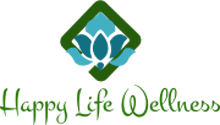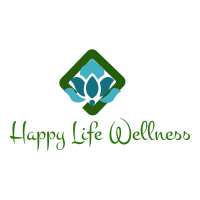Table of Contents
A Holistic Approach To Help You Heal
Psoriasis is a skin condition that affects millions of people worldwide. It’s not just an aesthetic issue, but it can also cause severe discomfort and embarrassment to those who suffer from it. No one knows for sure what causes psoriasis, but there are many treatments available including Ayurvedic treatments for psoriasis. Learn how you can cure psoriasis naturally with Ayurveda in this article!
If you have been itching and scratching your skin because of an overactive immune system, then psoriasis may be the answer. Psoriasis is a chronic condition that usually requires corticosteroids or salicylic acid-based ointments in mainstream medicine to soothe itchy patches on your skin with reddish sections and silver scales. However, if you are keen on less invasive treatment options for this problem, ayurveda might provide some solutions as well!
Ayurvedic medicine for psoriasis
According to ayurveda, kushta roga (skin disorders) that correlates with psoriasis are triggered by imbalances in the bodily humors associated with earth and water. These vitiated doshas have a negative impact on your blood tissues and skin as well as the watery components of your skin.
While the Ayurveda tradition is a holistic approach to healing, it also recognizes that when there are imbalances within one of the body’s three doshas, characterized as wind or air (vata), water/fluid (kapha) and fire/energy(pitta). When these balances become unbalanced this often leads to health problems.
The most common imbalance found in psoriasis sufferers is an excess of vitiated kapha which causes your skin coloration will turn coppery or whitish while normally dry patches caused by disturbed vata can lead to abnormally quick proliferation cells. Itching due too build-up ama may occur for those with vitiated Kapham dosha type.
1 Nidana Parivarjana: Avoiding Factors That Cause Psoriasis
Psoriasis is a skin condition that can be triggered by unhealthy habits like bad diet and lifestyle. One of the most important parts to ayurvedic treatment for psoriasis lies in tackling these triggers head-on, so it’s essential to take some time off from work!
Psoriasis is the result of improper dietary habits according to Ayurveda. Eating excessive amounts of certain foods like citrus fruits, curd, fish, horse gram and other similar items should be avoided at all times. In general too salty or spiced food are discouraged as well because they’re difficult on your stomach while carb-heavy heavy refined sugar laden foods provide little in terms of nutritional value for you body which makes them a poor choice when attempting to heal psoriasis naturally.
Ayurveda also has a strict policy against mixing incompatible food items such as milk and fish. Doing so may have adverse effects on the body’s digestive system, which is why it should be avoided at all costs!
Avoid sleeping during the day, suppress your natural urges of your body, and excessive exposure to heat.
Holistic healing and Psoriasis treatment
Ayurveda is a holistic healing system that advocates controlling emotion, such as excessive anger. This can be done through mindful meditation and practicing yoga.
2. Panchakarma Chikitsa: Purifying Treatments That Purge Toxins
Panchakarma
Even if you haven’t been diagnosed with psoriasis, it’s always a good idea to keep your stomach and intestines clean. In fact, many people find that their skin improves after following some simple dietary guidelines for two weeks!
According to the ancient Indian system of medicine known as Ayurveda, there are different types of cleansing treatments available depending on individual constitutions.
However before carrying out any type of treatment such as panchakarma (which includes vamana therapy), purvakarma is required in order make the other procedures effective so they work best on each person’s body chemistry based mainly from where he or she was born within India according to ayurvedic astrology principles.”
Snehana and svedana: Before panchakarma therapy, preparatory procedures like snehana and svedana are carried out so that toxins located in different parts of the body may be brought into the stomach where they can then pass through to your alimentary canal.
With these two steps completed, you will have a better chance at being able to remove any lingering traces of toxic buildup with this final step by allowing them passage on their way back down again
Sneha is an Ayurvetic technique which means “to love” or “to cherish.” This process consists primarily heating oil before adding fragrant herbs such as coriander seed powder. The mixture is heated until it becomes aromatic when used later for massage treatment.
Snehana is an ancient Indian practice that involves exfoliating the body externally or internally by lubricating with ghee and oils. Ghee, which can be ingested in increasing doses over a few days to soften toxins, will also form part of this therapy. A massage using bala oil-containing herbal oils may help cleanse your pores as well!
Sweating, or svedana is the process of applying heat to your body in order for toxins to flow through it and towards your alimentary canal. Svedanas can be done with a steam bath (sarvanga bashpa sweda) or by taking hot baths using medicinal herbal decoctions (avaghaha avaghaa).
Vamana, the first type of panchakarma treatment in Ayurvedic tradition and typically done before other treatments like virechna or basti. Scientific studies have confirmed its effectiveness as a therapy for psoriasis
Vamana is one form of panchkarma that can be used to treat psoriases according to ayurveda traditions. A scientific study has shown how effective it is when treating this condition.
While one study found that vamana therapy effectively reduced symptoms of psoriasis, more studies are needed to validate the effects on a larger sample size.
In this procedure, the herbal medicine madanaphala (Randia dumetorum), yastimadhu (Glycyrrhiza glabra) and vacha (Acorus calamus) are used to induce vomiting. Preparatory swedana and snehana were also done before procedures for nine days.
3. Shamana: Treatments To Pacify Vitiated Doshas
Shamana therapies are meant to pacify and recalibrate vitiated doshas. They may be administered independently or as a follow up treatment after panchakarma therapy, which is intended for purification of the body’s channels in order to relieve physical symptoms from mental stress.
Examples include taking herbs; eating nourishing foods like ghee (a type of clarified butter), milk products, honey whey shake drinks; applying medicinal pastes externally such as herbal powders mixed with oil-based healing agents applied onto skin surfaces that need soothing relief by massaging them into affected areas on your head, neck arms and chest using gentle circular motions while lying down on an elevated surface bed equipped with pillows at either end so you can stretch out
Nourishing remedies
With just a few ingredients, you can create your own herbal remedy from scratch. Trikatu and honey will help with digestion; triphala is an antioxidant and tastes great in tea! Add dashamoola for stress relief or suvarna makshik bhasm for respiratory issues to make the perfect custom-fit mix
Nourishing remedies such as buttermilk, which is rich in lactic acid that has been found to moisturize skin and reduce psoriatic scales on topical application. It can be taken orally or used locally for a variety of other ailments including alopecia areata (autoimmune condition causing hair loss), scabies, eczema, acne vulgaris (acne) and hyperpigmentation from sun damage.
Sandalwood decoction is typically prepared by brewing a teaspoon of sandalwod in three cups of water until it reduces to a cup. This should be taken thrice every day with some drops from rose and sugar if desired
One half of a cup of cabbage juice is to be had every day in order to help with healing and recover.
Topical remedies : Ayurvedic treatment
Herbal remedies have been around for centuries and are still being used today to relieve a variety of skin problems. Topical treatments include diluted lime juice, aloe gel, or a paste made from powdered almonds boiled in water.
The affected area can also be covered with fresh banana leaves which help fight inflammation – an idea that has been passed down through generations by many people living on the coastlines where bananas grow abundantly as well as inland areas like India’s Kerala region.
Other topical herbal methods such as musta (Cyperus rotundus) and manjistha (Rubia cordifolia) may work too but it is best to consult your physician first who will recommend more appropriate ones based off what you need.
Shirodhara practice
Shirodhara, the practice of pouring beneficial liquids on your forehead in a gentle stream is used to alleviate stress and mental disturbance.
Stress often aggravates or even triggers psoriasis due to its inflammatory response which can be alleviated through this therapeutic practice that stimulates vital areas known as marmas helping improve circulation and functioning of the autonomic nervous system when it has been disturbed by stress. Takradhara using buttermilk is especially considered beneficial for those with autoimmune diseases such as Psoriasis
Psoriasis patients get to enjoy the benefits of natural medicine, but in a safe and controlled way. There is no need for them to worry about breaking out into an itchy rash when they go outside during daylight hours.
The best way to keep psoriasis at bay is by seeking professional advice from qualified experts. Allopathic medications, herbal remedies and dietary changes can be used in conjunction with traditional treatments like massages or oil baths for the most effective results.
Self-medicating with herbal remedies is not advisable
While these provide a broad outline of the kind of remedial treatments used to control and counterpsoriasis, an ayurvedic practitioner will always customize the therapy your individual case. Self-medicating with herbal remedies is not advisable if you have psorasis especially if you are on allopathic medicines as well! Always seek out an experienced Ayruvaid doctor and let them know about any other medication that might affect their effectiveness while treating your skin condition!
Psoriasis is a skin disease that typically manifests as itchy, scaly patches. Traditional Western doctors may prescribe antibiotics or steroids to treat the symptoms – but these are only temporary solutions! Fortunately, an ayurvedic treatment for psoriasis can ward off this painful and unsightly condition without any side effects whatsoever.
Traditional medical treatments
Traditional medical treatments like taking antibiotics will not cure your psoriatic flare-ups in the long term; they simply cover up the problem with medication rather than solving it from within. Ayurveda on the other hand tackles both dermatological problems by getting rid of those pesky scales while also acting preventively against new outbreaks before they happen at all! With just one round of traditional meds you could end up.
Related Products on Amazon We Think You May Like:
Hlwellness is a participant in the Amazon Services LLC Associates Program, an affiliate advertising program designed to provide a means for us to earn fees by linking to Amazon.com and affiliated sites.








